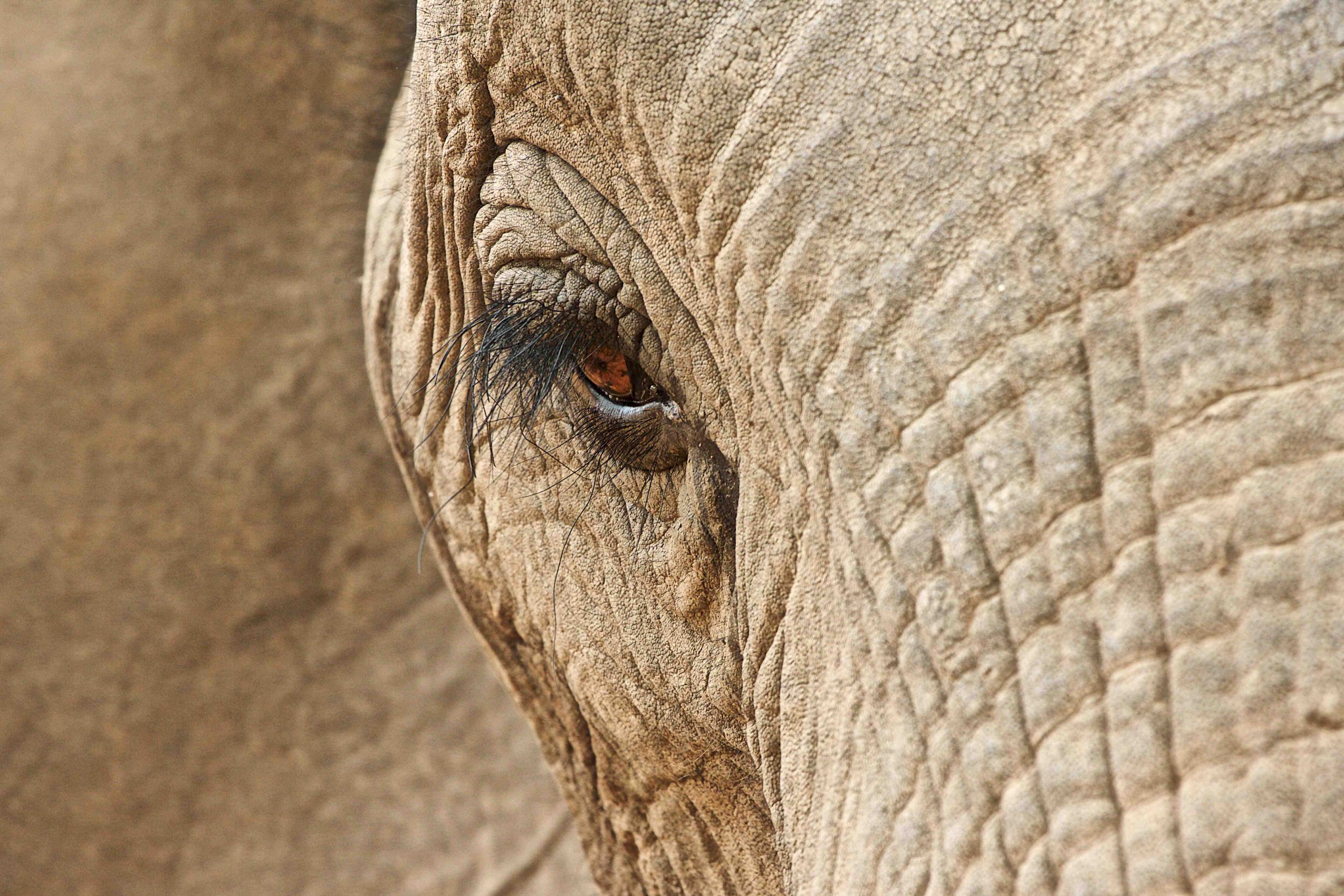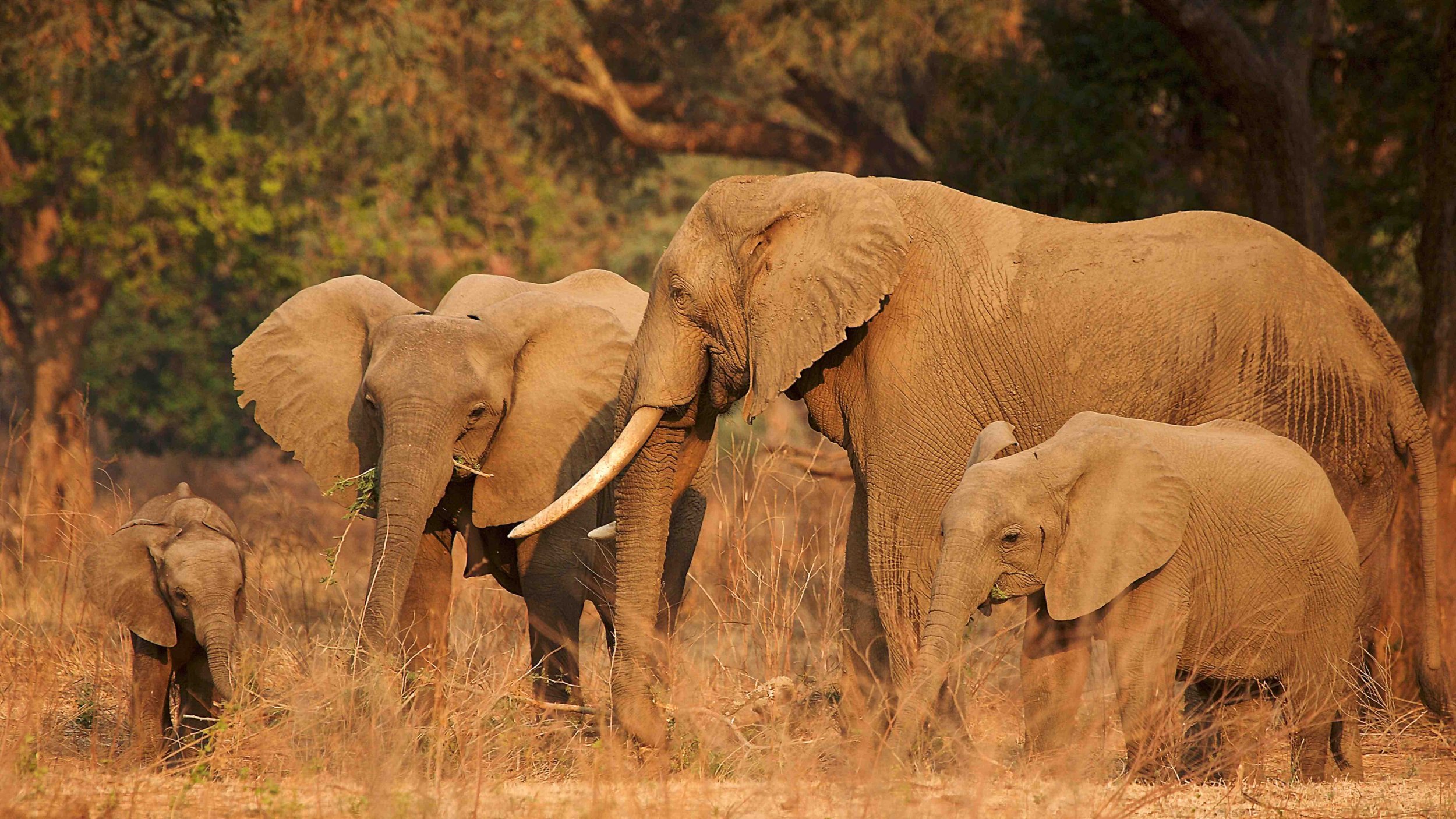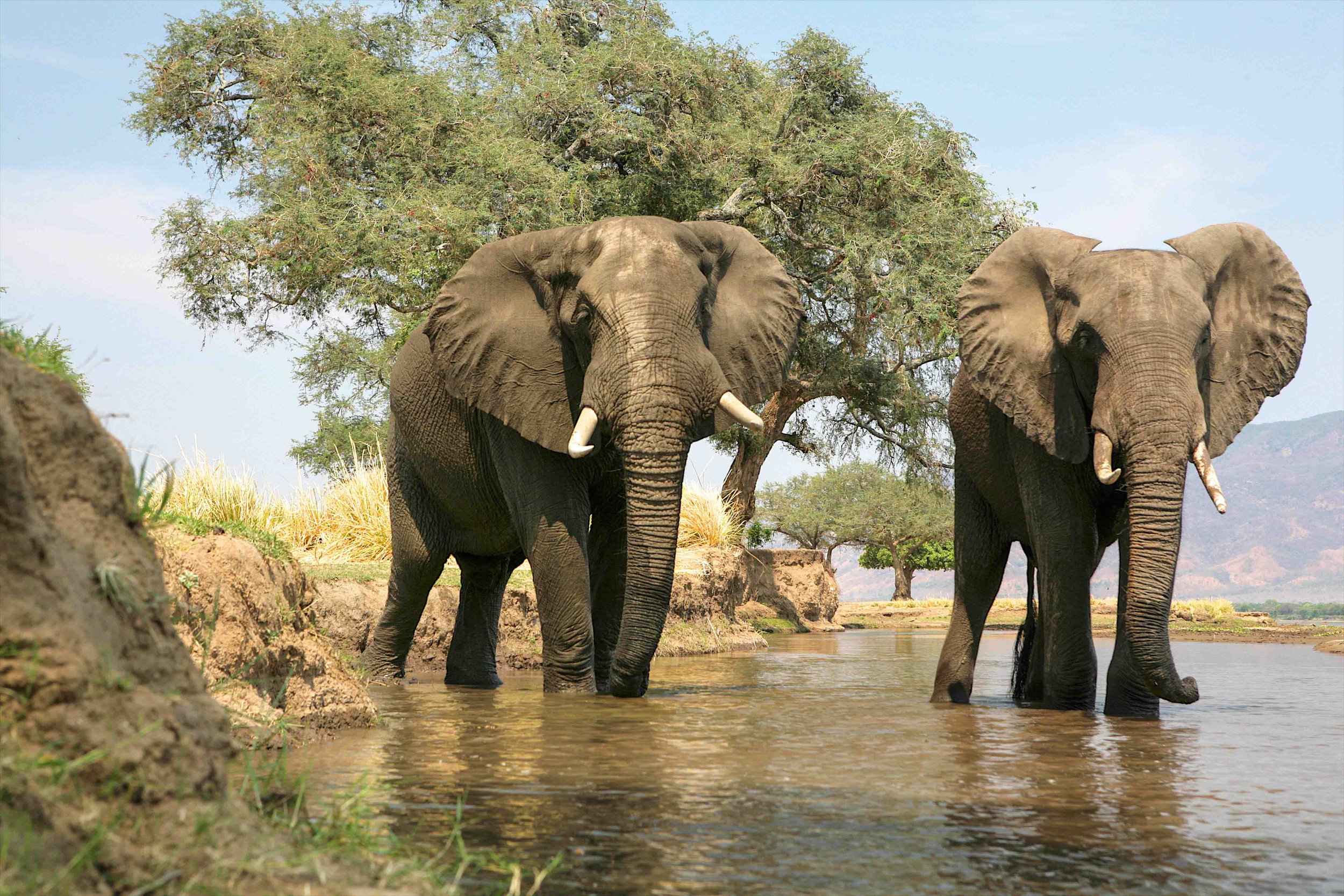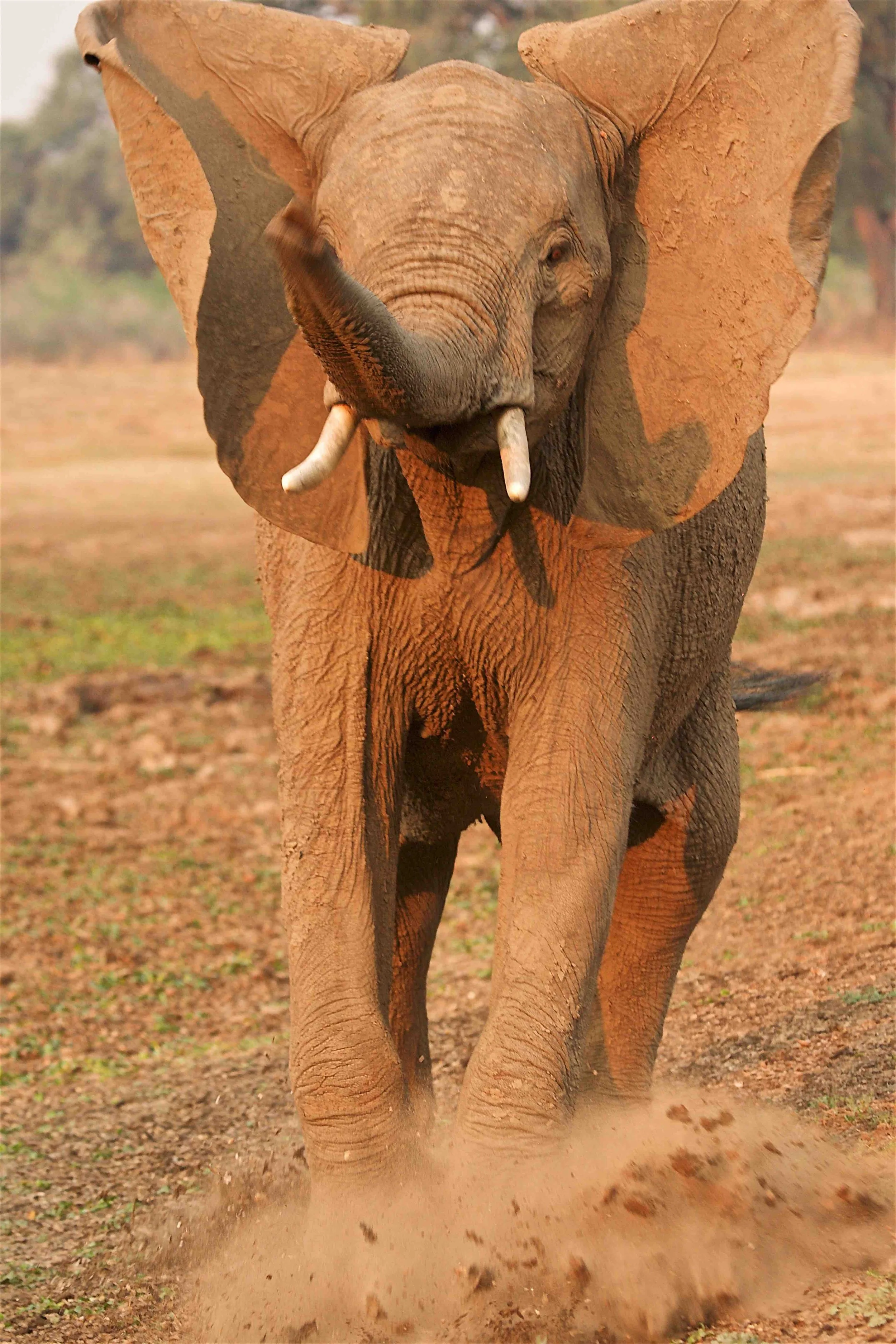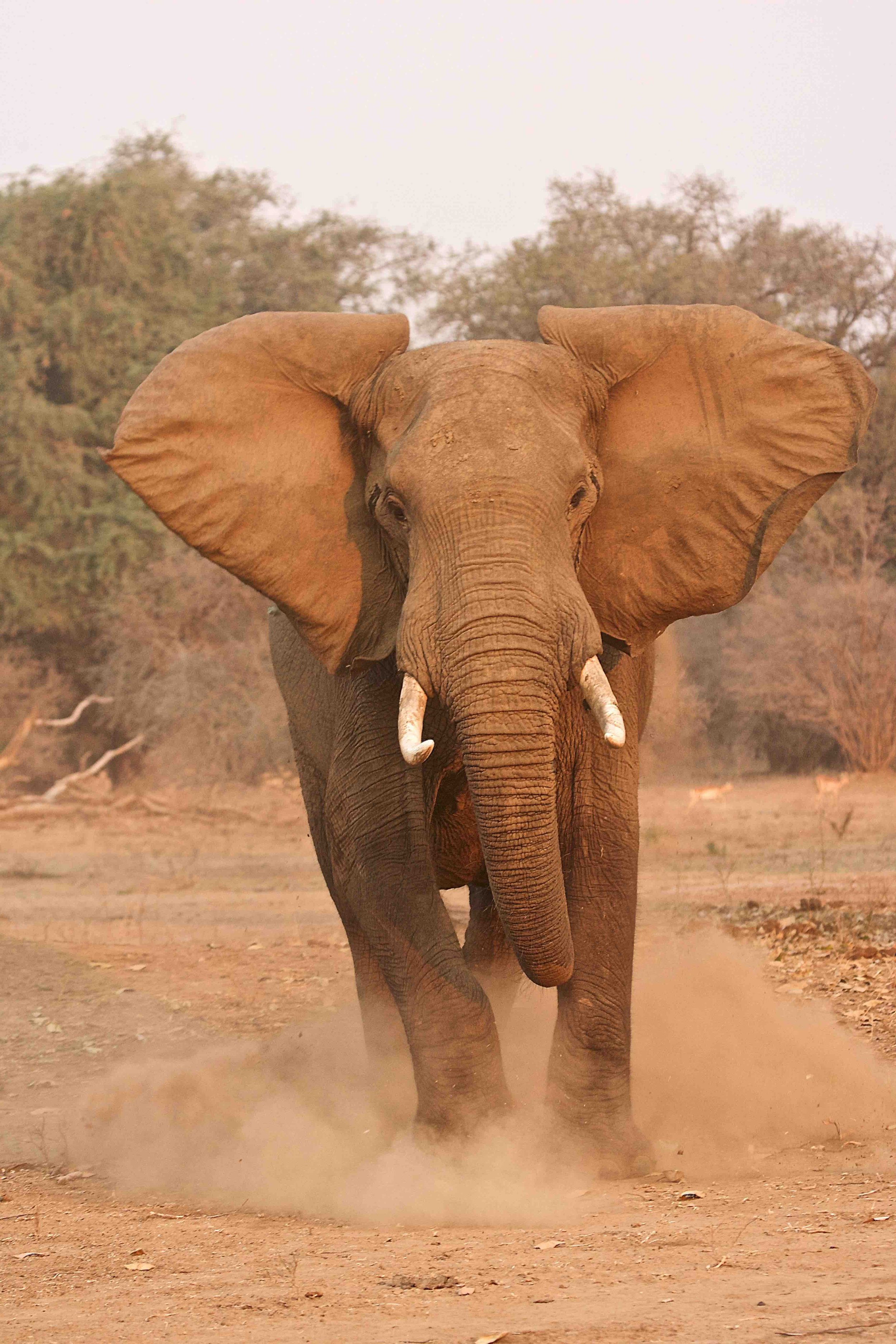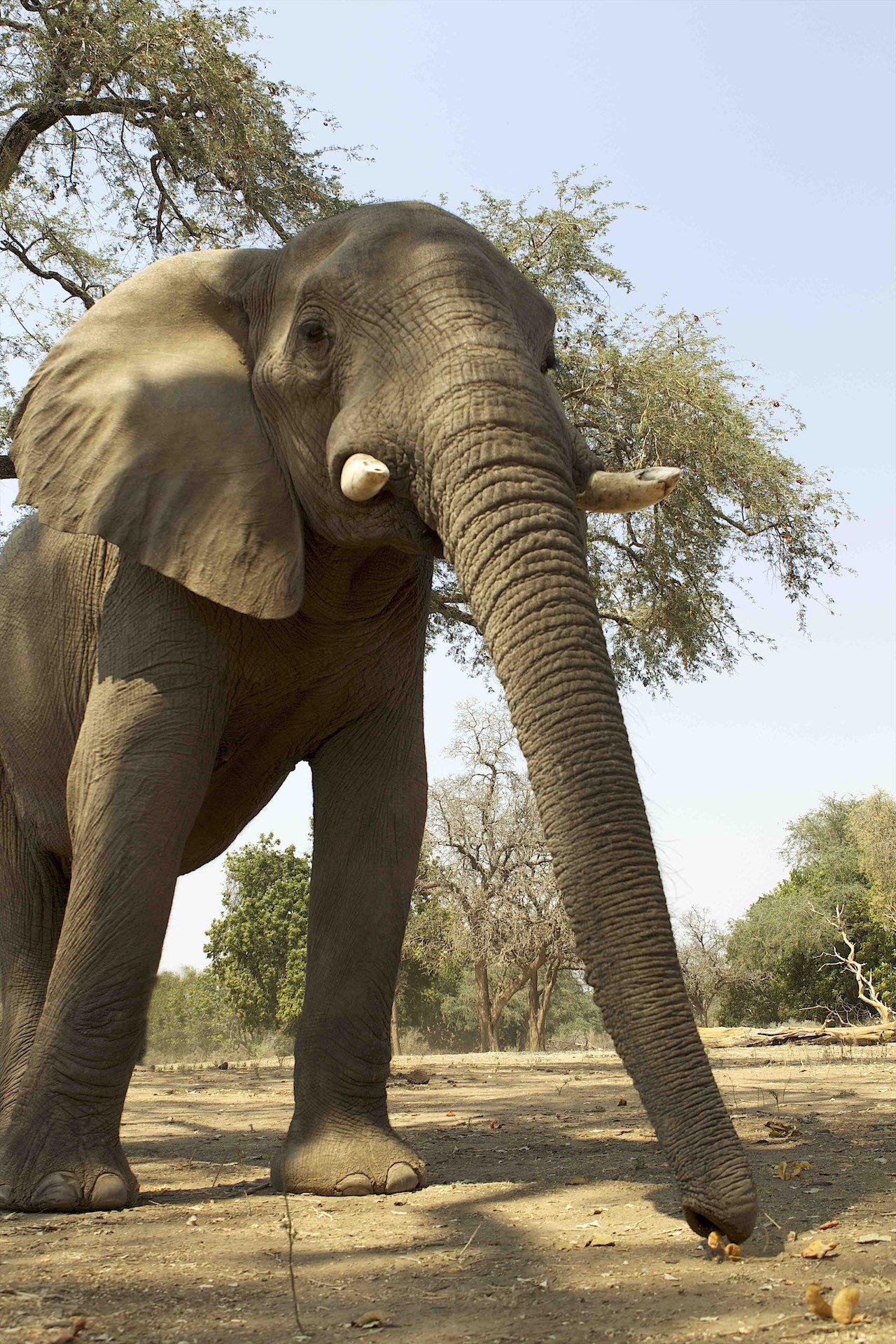Discover Elephant Behaviour
Elephants are incredibly majestic animals, admired for their strength, beauty, and intelligence. They’re an iconic symbol of Africa’s wildlife.
An elephant’s brain is three times the size of a human brain, with five times as many neurons. Their capacity for intellect and emotion is huge. Because of this, elephants think, feel and have the same ability as humans to make considered decisions and follow split-second instincts.
Elephant communication involves both direct and subtle movements; gestures and even sign language. Their ability to send signals over vast distances, without the aid of technology, far surpasses the capabilities of humans.
Herd Hierarchy
Elephants form tight family bonds and live in close matriarchal family groups of related females and calves. The gestation period for an elephant is twenty-two months, with females only coming into heat every four years, making the birth of a newborn baby an incredibly special occasion. Infants are not only cared for by their mother, but by other females in the herd.
Elephant memories span decades and continue to do so when passed down to future generations. This impressive memory bank serves matriarchs well during dry seasons when they need to guide their herd, sometimes tens of miles, to watering holes and fresh foraging locations that they remember from their past. These historic migration routes are mapped and stored by elephants creating their very own GPS system.
Male elephants leave their herd when reaching the adolescent age of thirteen or fourteen, as puberty hits. They will roam their rangeland alone, or join up with other males to form a bachelor herd. It is an important right of passage, as younger males will be kept in line by their elders, following their lead in learning how to compete for females, and respect members of the herd.
Foraging
It is not uncommon for elephants to use their powerful gymnastic skills to reach their favourite seeds and branches. Pushing off the ground onto their back legs takes enormous power and strength. Adult male elephants can grow to over six tonnes in weight, making this two-legged lift an incredible sight to witness. Elephants will use this well-honed skill to access acacia seeds and nutritious leaves usually out of reach. Due to their slow and steady digestive system, elephants will continue to graze throughout the day and night, for around sixteen hours in order to consume up to 200kg of food in a single day.
Another important nutritional source is the Baobab tree. The soft, porous bark has a high water content and a proven medicinal value too, as its fibres contain an antidote to various poisons.
Elephants use their body weight and tusks to pull the bark apart, before passing it to the younger members of the herd, using their adaptable trunks to grip small pieces.
Elephant Communication
This image depicts a familiar elephant greeting and game. Elephants are extremely tactile animals, using their trunks and bodies to send important messages as part of their comprehensive communication set.
Just as humans use their hands to greet one another or express ourselves, elephants engage their trunk, ears, and bodies to do the same. The trunk is used to reassure younger elephants, as they too will touch the mouths of their mothers or female relatives to learn feeding techniques and as a means of feeling reassured.
Elephant Defensive Charge
Elephants are incredibly graceful despite their size. This is apparent even when charging. Not naturally aggressive, elephants will charge only when absolutely necessary, when feeling threatened. In male elephants, charging is a display of strength, and they will use any opportunity to mock-charge when wanting to show off.
Mock Charging
Males want to show their dominance by making as much fuss and noise as possible, accompanied by the distinctive ear flapping. There is no malice meant here, but naturally, it is also important to avoid causing elephants any distress that could lead to a charge. Body language reveals the intentions of an elephant charge.
For a mock display, the truck will be outstretched as the elephant thunders towards the subject, ears flapping. They will stop abruptly, kicking dust and trumpeting loudly.
Intentional Elephant Charge
In a real charge the elephant will bow its head downwards, trunk tucked in and tusks in their optimal position to make contact.
Female elephants are extremely protective of their young. Their space must be respected because if they or their calf feel threatened, a determined charge will follow. If a female charges, it will always be with intention.
Protecting their young
Educating the younger members of the herd is fundamental to their survival in the wild. Elephants are fast learners, and they need to be. Poachers are not their only predator. A young elephant can make an easy target for lions and crocodiles, and the art of charging is vital. It is also a way for a young elephant to express themselves and practice communication skills with their siblings and herd, as this infant demonstrates.
Help protect the next generation of elephants and their habitat, now >>>
Communication
Elephants use over sixty different calls to communicate. The most recognisable to us is the high-frequency trumpet or their deep bellows. But these extraordinary mammals also produce sub-sonic rumbles that are sent below our own hearing range. The communication sound range of an elephant has been recorded to travel up to ten kilometres to herds elsewhere. These underground messages are picked up by their feet which act like huge receivers on the ground, perfecting the art of long-distance calling.
What is even more astonishing is how an elephant responds when confronted with bees. You may know that elephants have a fear of bees, a finding that has paved the way for human-elephant coexistence in the form of beehive fences (check these out here). But did you know that elephants also have a unique rumbling call just for bees? The infra-sonic rumble sends a specific alert to other elephant herds, warning them of the threat of bees close by.
The matriarch will also send a signal to her herd, that they should leave the area immediately. We can’t hear this signal, but we can see how the herd responds, promptly walking off at speed.
Elephant researchers, Joyce Poole and Petter Granlie created ‘Elephant Voices’, a comprehensive database of elephant gestures and calls. This highly informative site is packed with research, videos, and in-depth analysis of elephant society, and is well worth visiting at: www.elephantvoices.org
Read about how our community-managed projects are protecting elephants and their habitat.

